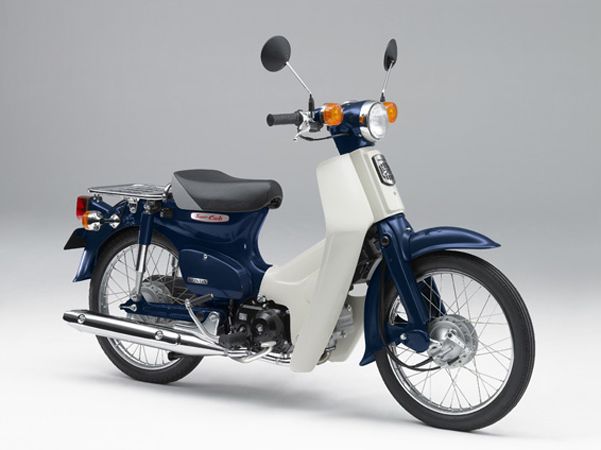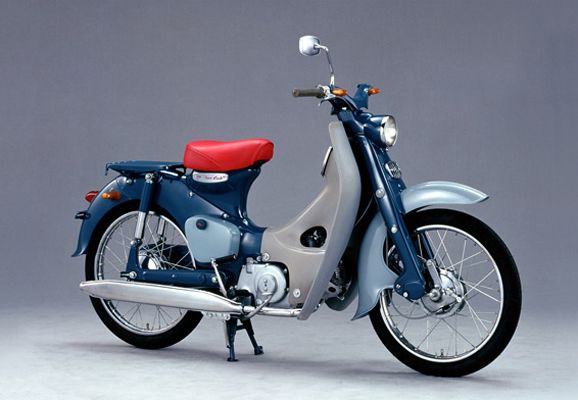Cumulative worldwide production of Honda Cub series motorcycles reached the 60 million-unit milestone at the end of April 2008. Honda Super Cub C100, first introduced in Japan in 1958, has gained worldwide acceptance both as a business-use motorcycle and for daily transportation, and has been being enjoyed by customers in more than 160 countries around the world. This August will mark the 50th anniversary of launching of Honda Cub series.
When Super Cub was originally launched, the 2-stroke engine was the mainstream power plant for motorcycles. However, the first generation Honda Super Cub C100 was equipped with an innovative and high-performance 50cc 4-stroke engine which was highly economical and durable. Super Cub C100 also achieved creative and unique designs including the low-floor backbone frame which enhanced the ease of getting on and off, a centrifugal clutch system which required no clutch operations, and the installation of a large plastic leg shield which reduced the amount of dirt splatter and wind experienced by the rider. Since the introduction of the first generation model, the basic design and concept have remained virtually unchanged, and the unique style has been passed on even to current models.
In regions outside of Japan, such as Asia, the Honda Cub series has evolved to accommodate the unique culture and diversifying customer needs in each country. In Japan, an electronically-controlled fuel injection system, Honda’s PGM-FI, was installed on Super Cub in 2007, enhancing the environmental performance of the model. Demonstrated by these examples, Honda Cub has been continuously advancing throughout the world.
Exports of Super Cub began in 1959 with the first destination being the U.S., and production in regions outside of Japan began in 1961 in Taiwan, with production based on component parts sets. Since that time, based on Honda’s long-standing commitment to “build products close to the customer,” local production began in many other countries. The Honda Cub series is currently being produced in 15 countries around the world.

